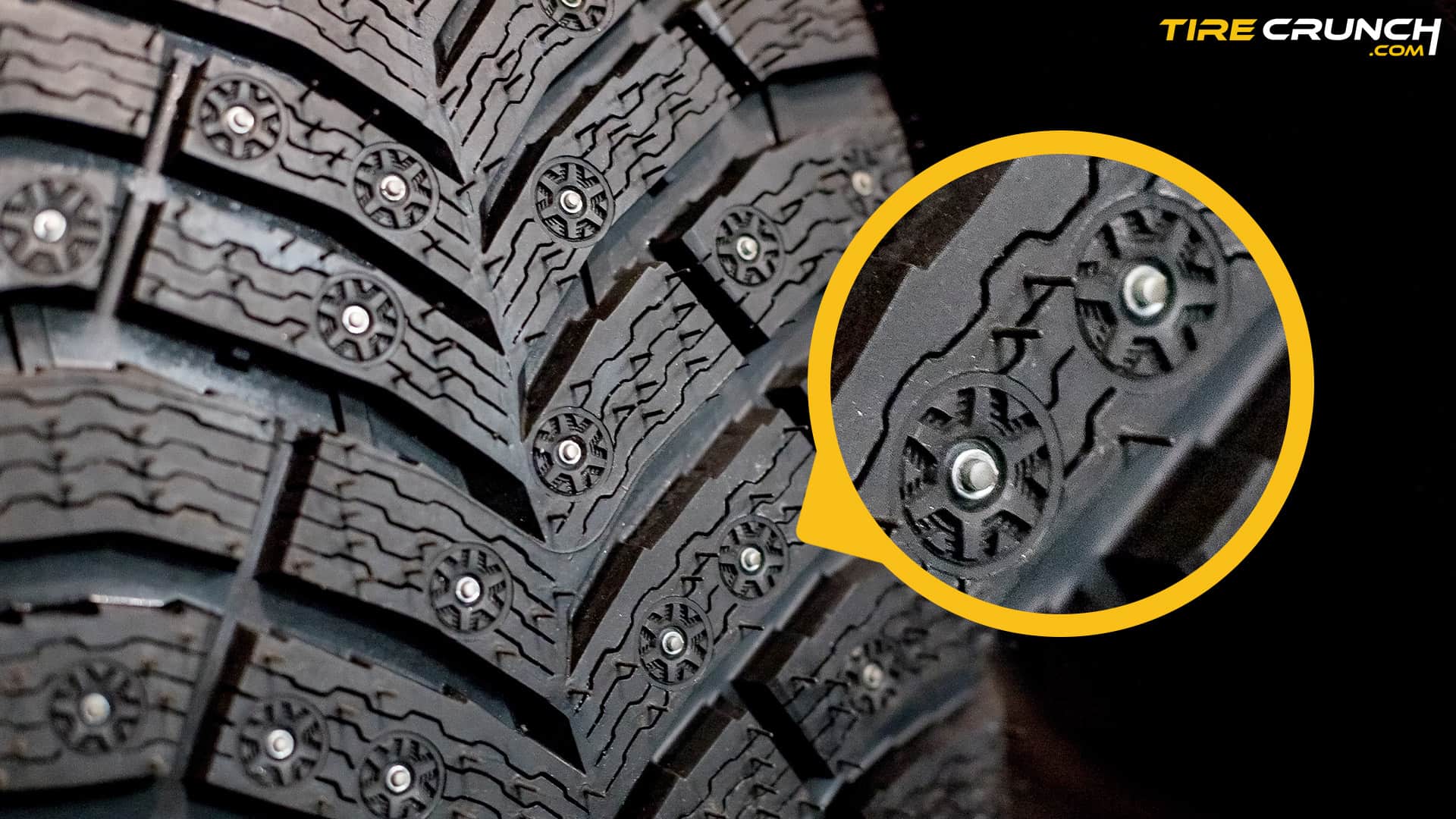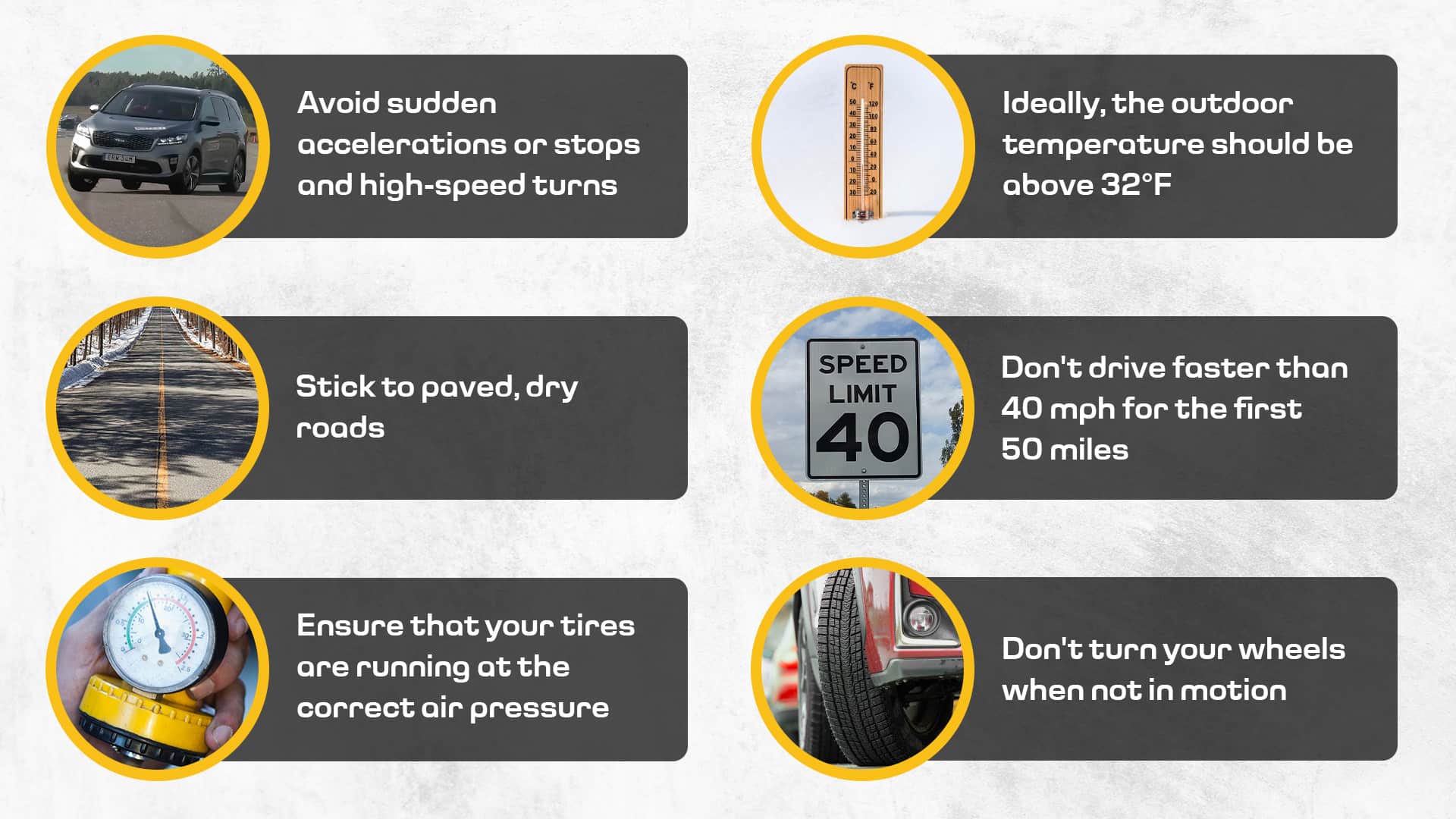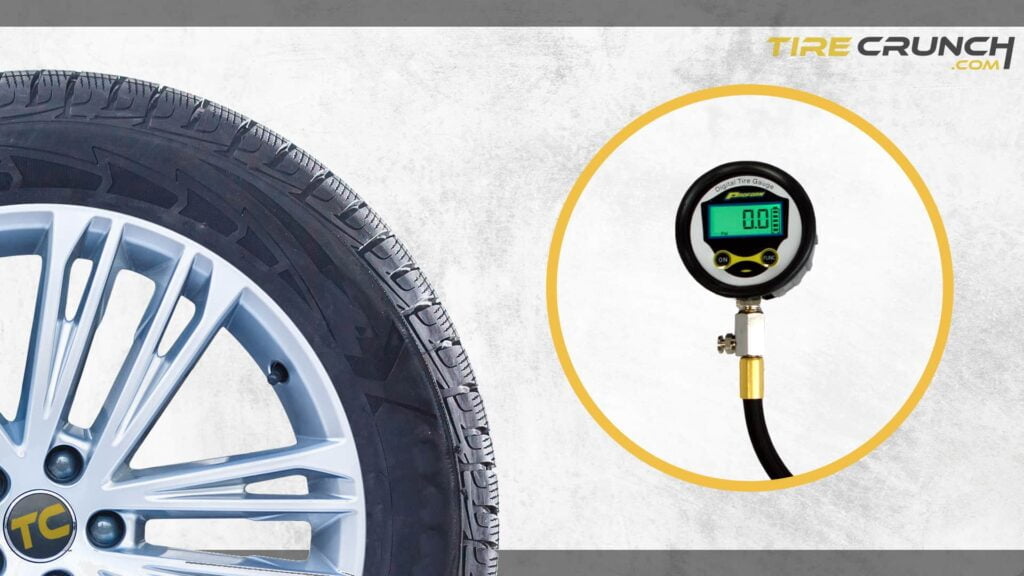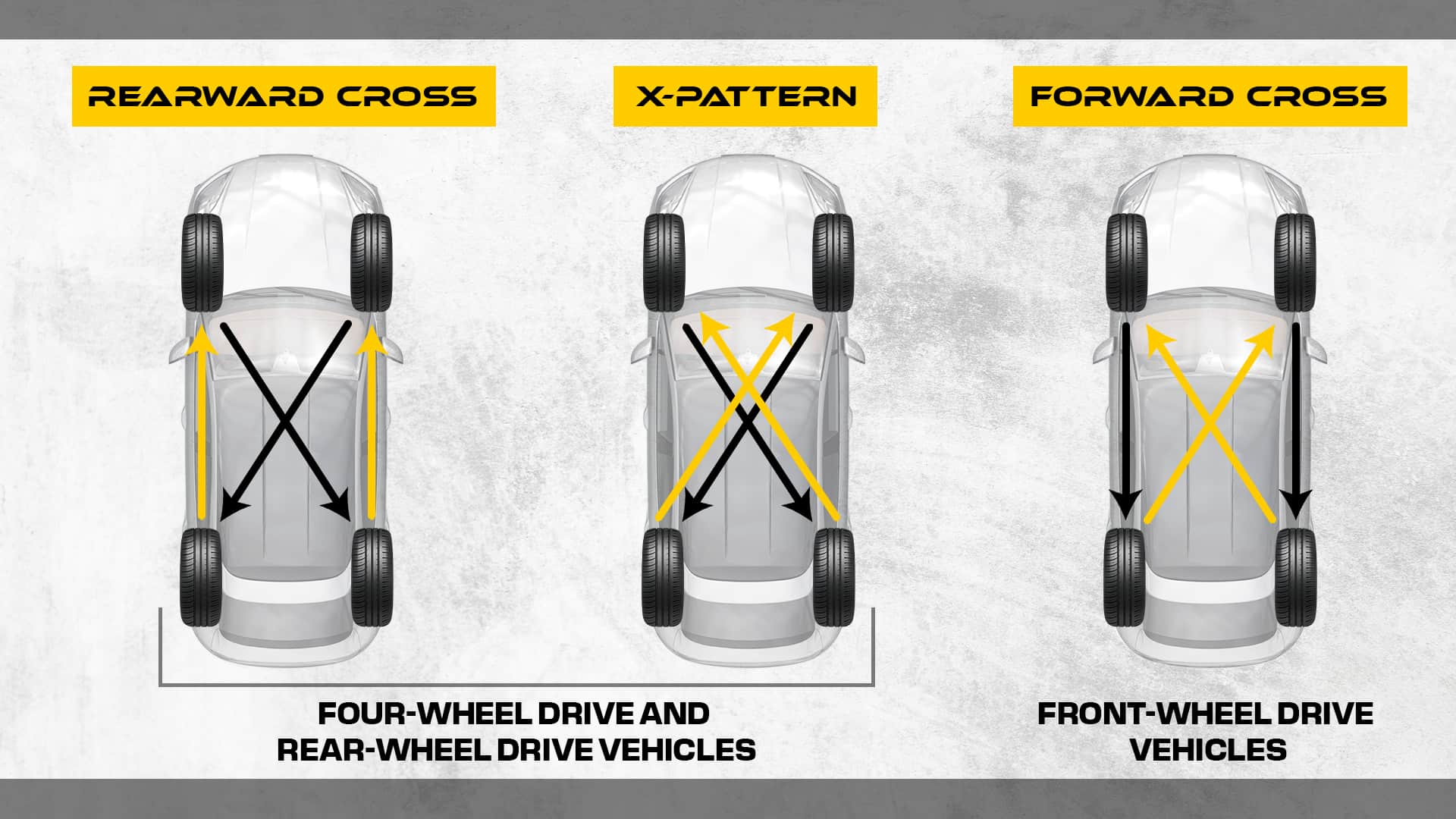How Do I Break In Studded Tires? Tips from Tire Makers

Studded tires are often the go-to solution for navigating safely on icy roads and snowy conditions, providing much-needed traction on slippery surfaces.
However, many people might not realize that properly breaking in new studded tires is essential for their longevity and performance. In this blog post, we’ll dive into the details of what studded tires are, why they’re important, and how to break them in effectively so you can tackle winter driving confidently.
Understanding Studded Tires
Studded tires are winter tires that have metal studs embedded in their tread design, which grip the driving surface and provide extra traction on icy or packed snow roads.
The metal studs found in studded tires typically consist of a tungsten carbide pin housed within a cylindrical metal casing. These protruding pins dig into ice and compacted snow, allowing drivers to maintain better control over their vehicle and minimize slipping or sliding on treacherous roads.
How Do I Break In Studded Tires?

The break-in period for a new set of studded winter tires starts the second you start driving. According to the tire manufacturer Nokian, to help the studs settle into their holes securely so they can last for the duration of the tire’s life, it’s important to take extra care during the first 250-to-300 miles. This extra care implies:
Properly breaking in new studded tires helps the lubricant evaporate while compressing the tread rubber around the stud for better embedding and improved traction in winter driving conditions.
Do You Need To Break In New Studded Tires?
Yes, many tire manufacturers recommend breaking in new studded tires. During the manufacturing process, a lubricant is applied to the studs to facilitate installation. This lubricant needs to be released by driving on dry paved roads at moderate speeds for around 60-100 miles.
Additionally, breaking in studded tires allows the rubber tread design and stud’s flat head to properly embed into each other for optimal traction on snowy or icy conditions.
Without proper breaking-in, you risk losing studs or damaging your tire’s tread design. It’s important to understand that even if a manufacturer claims their tires are pre-broken in, they still require additional miles of driving at moderate speeds on dry paved roads to ensure proper lubrication and stud embedding.
Tips For Maintaining Studded Tires
It’s important to keep in mind that even after the tire has been broken in, it’s best to avoid unnecessary skidding, brake locking, or wheel spin any time the stud is in contact with the pavement. Doing so will wear down the stud pin and may even cause it to break.
Besides this, to ensure your studded tires are in top condition for winter driving, it’s important to properly maintain them:
Proper Tire Pressure

Maintaining proper tire pressure is essential for the longevity and performance of studded tires. Make sure to check the tire pressure at least once a month when the tires are cool and always check your spare tire as well. Vehicle manufacturers specify PSI assuming tires are cold, so it’s best to check them accordingly.
Rotating Your Tires

Regular tire rotation is vital for maintaining proper tire wear and maximizing the lifespan of your studded tires. Rotating your tires entails moving them from one position to another, ensuring that they are evened out over time.
For example, front-wheel-drive vehicles tend to wear down their front tires quicker than their rear ones because the engine’s weight sits directly over those wheels. Tire rotation ensures that all four tires receive equal treatment regardless of where they’re positioned on your car, thus prolonging its life span.
Driving At Moderate Speeds
When driving with studded tires, it is crucial to keep your speed in check. Driving too fast can cause the studs to become ejected from your tires.
Avoid Driving On Dry Pavement
It is best to avoid driving on dry pavement when using studded tires. The metal studs found in these tires are intended for use on snowy and icy roads, where they provide improved traction and handling.
However, when used on dry pavement, the studs can cause damage to the roadway and wear down quickly.
Avoid Sudden Stops And Starts
Avoid quick accelerations and sudden stops, which can cause excessive wear and tear on the stud’s flat head or cylindrical metal housing. Additionally, sharp turns at high speeds can pull studs out of their small holes molded into the tread rubber.
Frequently Asked Questions
Here are some frequently asked questions about breaking in studded tires:
Do I need to break in new studded tires?
Yes, it’s essential to break in new studded tires for long-lasting performance and safety.
When should I break in studded tires?
You should break in your studded tires during the first 250 – 300 miles of use or as specified by the manufacturer.
What are the benefits of breaking in studded tires properly?
– Improved safety and control on snowy and icy roads
– Enhanced traction and handling during winter driving conditions
– Reduced wear and tear on your tires,
– Better tire lifespan
Can I drive on dry pavement with my studded tires?
It is not recommended to drive regularly on dry pavement with your studded tyres as it can lead to unnecessary wear.
Conclusion
Breaking in studded tires is an essential step to ensure optimal performance and safety during harsh winter conditions. It’s important to follow the proper break-in process by driving at moderate speeds, avoiding sudden stops and accelerations, and adjusting your driving style to road conditions.
Maximizing the life of your studded tires involves regular maintenance such as inspecting studs before each winter season, rotating your tires, and maintaining proper tire pressure.
By breaking in your studded tires properly, you can improve their performance and durability for a safe winter driving experience.
